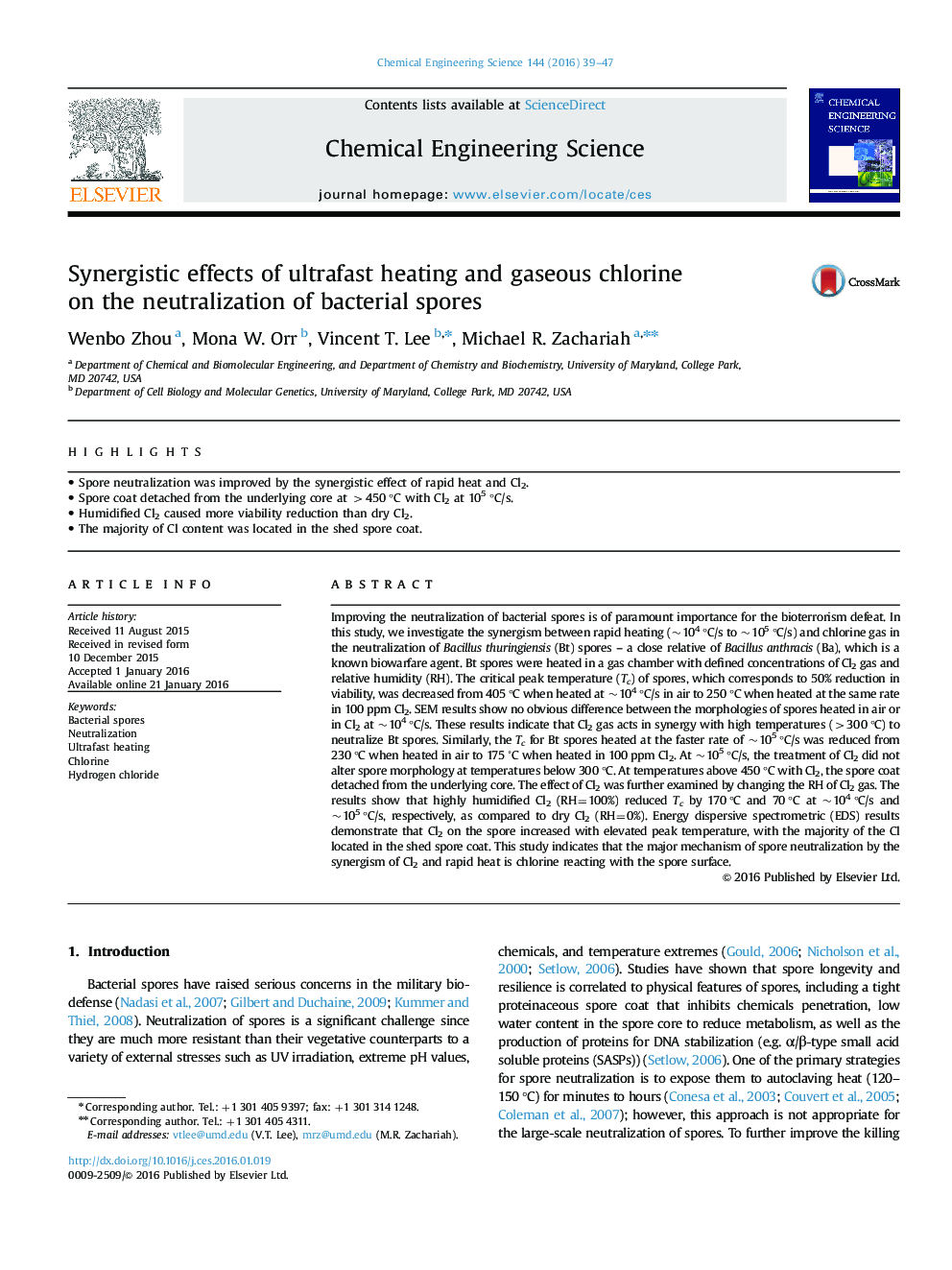| کد مقاله | کد نشریه | سال انتشار | مقاله انگلیسی | نسخه تمام متن |
|---|---|---|---|---|
| 6589257 | 456839 | 2016 | 9 صفحه PDF | دانلود رایگان |
عنوان انگلیسی مقاله ISI
Synergistic effects of ultrafast heating and gaseous chlorine on the neutralization of bacterial spores
ترجمه فارسی عنوان
اثرات هم افزایی گرم شدن فوقانی و کلر گازی بر روی خنثی سازی اسپورهای باکتریایی
دانلود مقاله + سفارش ترجمه
دانلود مقاله ISI انگلیسی
رایگان برای ایرانیان
کلمات کلیدی
اسپورهای باکتریایی، خنثی سازی، حرارت فوق العاده، کلر، کلرید هیدروژن
موضوعات مرتبط
مهندسی و علوم پایه
مهندسی شیمی
مهندسی شیمی (عمومی)
چکیده انگلیسی
Improving the neutralization of bacterial spores is of paramount importance for the bioterrorism defeat. In this study, we investigate the synergism between rapid heating (~104 °C/s to ~105 °C/s) and chlorine gas in the neutralization of Bacillus thuringiensis (Bt) spores - a close relative of Bacillus anthracis (Ba), which is a known biowarfare agent. Bt spores were heated in a gas chamber with defined concentrations of Cl2 gas and relative humidity (RH). The critical peak temperature (Tc) of spores, which corresponds to 50% reduction in viability, was decreased from 405 °C when heated at ~104 °C/s in air to 250 °C when heated at the same rate in 100 ppm Cl2. SEM results show no obvious difference between the morphologies of spores heated in air or in Cl2 at ~104 °C/s. These results indicate that Cl2 gas acts in synergy with high temperatures (>300 °C) to neutralize Bt spores. Similarly, the Tc for Bt spores heated at the faster rate of ~105 °C/s was reduced from 230 °C when heated in air to 175 ËC when heated in 100 ppm Cl2. At ~105 °C/s, the treatment of Cl2 did not alter spore morphology at temperatures below 300 °C. At temperatures above 450 °C with Cl2, the spore coat detached from the underlying core. The effect of Cl2 was further examined by changing the RH of Cl2 gas. The results show that highly humidified Cl2 (RH=100%) reduced Tc by 170 °C and 70 °C at ~104 °C/s and ~105 °C/s, respectively, as compared to dry Cl2 (RH=0%). Energy dispersive spectrometric (EDS) results demonstrate that Cl2 on the spore increased with elevated peak temperature, with the majority of the Cl located in the shed spore coat. This study indicates that the major mechanism of spore neutralization by the synergism of Cl2 and rapid heat is chlorine reacting with the spore surface.
ناشر
Database: Elsevier - ScienceDirect (ساینس دایرکت)
Journal: Chemical Engineering Science - Volume 144, 22 April 2016, Pages 39-47
Journal: Chemical Engineering Science - Volume 144, 22 April 2016, Pages 39-47
نویسندگان
Wenbo Zhou, Mona W. Orr, Vincent T. Lee, Michael R. Zachariah,
